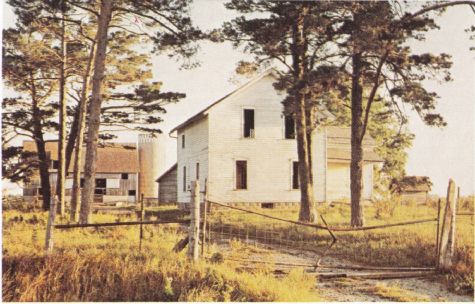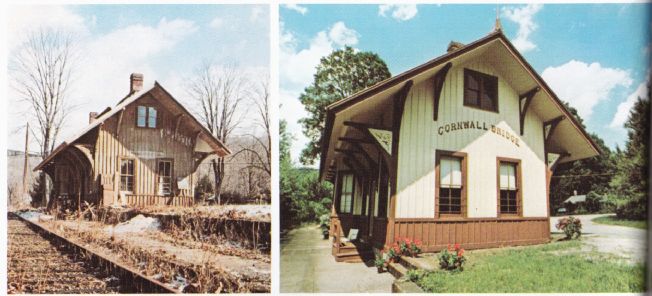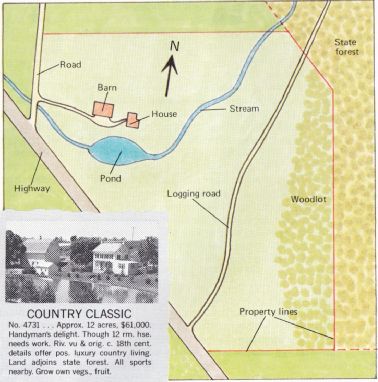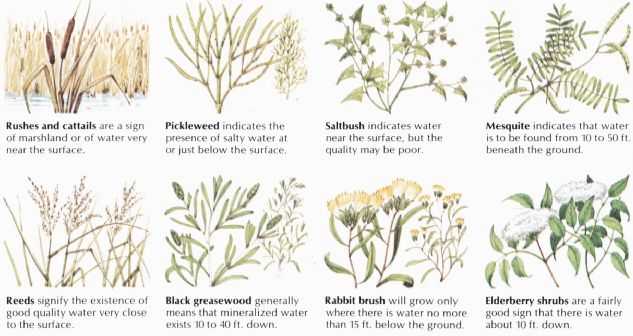Realizing the Dream of Owning a Place In the Country
With careful planning and a modest investment almost anyone can turn the dream of owning a small farm or a few acres of country land into a reality. And with some effort this land may provide a significant portion of life’s amenities:
wood for the fireplace, fresh produce for the table, a pond for fishing or swimming—even waterpower to generate electricity. But as with any other major purchase, care and caution are required.
The first step is to have, in general terms, a strong notion of what it is you want. Those desiring year-round warmth will obviously have different priorities than those who wish to see the seasons change. Prospective part-time farmers will look for one kind of land, whereas weekend sojourners will look for another. Whether you enjoy isolation or prefer neighbors nearby is another consideration to ponder And, of course, there is the matter of money: how much you can afford to put down, how much you can pay each month for a mortgage and taxes. Once you have made these decisions, pick an area or two to investigate. Get the catalogs of the Strout and United Farm real estate agencies, and look for ads in the Sunday paper real estate section. Also subscribe to local papers from the regions of your interest; these may provide lower priced listings plus information on land auctions. When a property appeals to you, investigate— first by phone and then in person. When looking, do not neglect small matters, such as television reception, the contours of the land, and the style of the farmhouse; but never lose sight of your ultimate goals or basic priorities, an(l gauge the property in that light.

--- Abandoned farms, like the one at right, often offer
the greatest value. Not only has the land already been cleared—though it may
have become overgrown—but there are outbuildings and a residence in place,
though these may require considerable renovation. In addition, the owners of
the property are likely to be particularly interested in selling, since they
have already moved away.
A railroad station becomes a summer home:

--- Turn-of-the-century railroad station in Connecticut
Housatonic River Valley has been converted into a charming country retreat
by architect David Williams and his wile, Marion. Mr. Williams came across
the station while cuing a study on alternate means of transportation. Despite
a caved-in roof, a severely damaged freight office, and general signs of deterioration
and neglect, the old station caught his fancy and he put a bid in on it. (Later
he learned that his bid had topped one that artist Eric Sloane had made. He
also learned that author James Thurber had made the station the theme of one
of his poems.)
All renovations were accomplished with the goal of preserving the station’s original flavor. The waiting room and ticket window were left intact, and household appurtenances—kitchen, bathrooms, closets, and the like—were relegated to an area in back that had once been a Railway Express Office. Recently, there has been talk that a group of railroad buffs will reactivate the old Penn Central tracks that pass in front of the station. The Williamses are now looking forward to the clay when the will be able to gaze out of a window of their home while a 19th century locomotive and its cars pass by.
To Buy or Not to Buy: Resist That Impulse
Once you have found a piece of property that appears to meet your needs, resist the temptation to come to terms. This is the time for an in-depth investigation rather than purchase. After leaving the parcel, think about it, talk about it, try to remember its contours, and list all the things you are not like as well as the things you do. If after a week or so the land still is appealing, arrange to spend an entire day tramping about it.
Walk slowly about the property in the company of your family. Among the subjects of discussion should be these: Is the ratio of meadow to woodlot about what you have in mind? Does the woodlot consist of hard or soft woods? (The former are generally more valuable as timber and fuel.) Is the meadow overlain with ground cover indicating some fertility? Is it swampy? Is there a usable residence on the property? If not, can you afford o build? Is there a road that cuts across the property into a neighbor’s driveway? If so, there is likely to be an easement on the parcel, conferring on the neighbor the right to cross at will. If there is no electricity, gas, or telephone service, ask yourself honestly how well you can get along without these conveniences. And if your goal is to be a part-time farmer and full-time resident, check into employment possibilities in the area.
If the answers to most of these questions are satisfactory, then begin a more formal survey of the property. For those who plan to grow vegetables, grains, or fruits, the question of soil fertility becomes a major factor in any ultimate decision. Take a spade and dig down—way down—in several widely scattered places. Ground that is adequate for good crops will have a layer of topsoil at least 10 inches deep; 12 or 15 inches deep is better. The topsoil should be dark, and when handled it should feel soft, loose, and crumbly to the touch. If the topsoil seems oh enough and deep enough, make doubly certain by making several samples to the nearest county agent; he can analyze it for acidity (pH) and mineral content and tell you what crops are best to grow on it. Another way of discovering what crops the soil will support is to find out what the neighbors are growing. If the farm over the fence has a healthy stand of corn, and a thriving vegetable garden, the chances are good that the land you are looking at will also accommodate those crops.
When walking the land, look for evidence of soil erosion. Gullies are a sign of erosion, as are bared roots of trees and bushes. Parched, stony, light-colored soils indicate that erosion has carried off the rich topsoil. If you are only planning a small kitchen garden, erosion and pack of topsoil can be repaired. But if extensive cropping your goal, the cost of restoring scores of acres to fertility may be beyond your reach.
Check the drainage capacity of the land. If the subsoil is so compacted or rocky that it cannot quickly absorb water, then the plants you sow are likely to drown. Also bear in mind that poor drainage can make it difficult to install a septic system, since sewage will tend to back up or rise to the surface. Inspect the property in the wake of a heavy rainstorm. If the surface is muddy or even very spongy, it is a sign that the drainage is poor. Dig several widely spaced holes in the ground, each one about 8 inches around and 3 to 4 feet deep. Check the soil near the bottoms. If it is hard-packed and unyielding to the touch, chances are it is relatively impermeable to water. Or pour a bucket of water on the ground, wait 10 minutes, and dig to see how far the water has penetrated. For the most accurate information, a percolation test by a soil engineer is necessary.
If you are planning on building a house, carefully inspect possible construction sites. The land for the house should be reasonably fiat, with easy access to a public road. Do not overlook the site’s relationship to the winter sun. A house with a northern exposure, particularly if it is on a slope, is likely to cost consider ably more to heat than one with a southern exposure that can take advantage of the warming rays of the low-lying winter sun.
Finally, there is the all-important matter of water— the lack of a reliable source of water for drinking and irrigation can make an otherwise desirable site worth less. The subject is discussed in detail below.
In all events, try to delay a commitment until you see the land in all seasons; both the blooms of spring and the snows of winter can hide a multitude of evils.
- - -
Decoding the real-estate ads:
Composite view of typical country property (right), together with a real estate advertisement (inset) of the type that might appear in the classified section of a newspaper or as part of a catalog of realty listings, serves to illustrate the gap that sometimes exists be tween description and reality. The phrase “Approx. 12 acres” may mean just about anything at all but likely indicates that no ac-curate survey has been made. “Handy man’s delight” is most often a euphemistic way of saying that the house and outbuildings are wrecks, as an on-site inspection would reveal. “C. 18th cent, details” probably reflects an unsupported belief that the house may be as much as 200 years old. [ reference to state land carries the implication that the area is protected from overdevelopment, but the ad does not state that a road cuts aim across the property to permit loggers access to the state forest. Oddly, but not atypically, the ad fails to point out a number of positive aspects. Though the phrase “Riv. vu” indicates the presence of running water nearby, the fact is that both a stream and a pond exist on the property. Nor does the ad reveal that there is an excellent woodlot and that the farmhouse is in close proximity to a public highway, allowing for easy access. For all its deficiencies, the ad does awaken interest, but only by visiting can you judge the property accurately.

--- COUNTRY CLASSIC: No, 4731 .. - Appros. 12 acres, $61,000- Handyman’s delight.
------------------------------------
Buildings are Important but Water is Vital
In assessing country property the most important single consideration is the availability of an adequate supply of fresh, potable water. With water virtually anything is possible; without it virtually nothing. Consider, for ex ample, that a single human being uses between 30 and 70 gallons per day; a horse between 6 and 12; a milk cow about 35; and a 500-square-foot kitchen garden, if it is to thrive, must have an average of 35 gallons of water per day. Even if the property is to be used only as a country retreat, a family of four will require a bare minimum of 100 gallons every day for such basic needs as drinking, washing, cooking, and sanitation. In short, complete information about water availability is an imperative when assessing country property. This is not to say, however, that a piece of land should, in all cases, be rejected if the existing water supply is inadequate, since in most instances a water system can be developed (see pp.54 Nevertheless, this can be an expensive, laborious, and time-consuming effort, and it is far more satisfactory if a water system is already in place.
Existing systems. If there is a well or other water source, along with plumbing in the house, in the out buildings, and at the fields, test the system out as completely as possible. Try all of the taps: one at a time, several at once, all at once. Is the flow sufficient for your purposes? Does the water pressure drop significantly when several taps are on at once? Has the water been tested for potability and for minerals, particularly salt? Water with even a relatively low salt content may be useless for drinking or irrigation. Remember that a fast flow in spring may become but a trickle in the dog days of summer. This is another reason to visit a property in different seasons before purchase.
Above-ground water. A river, stream, brook, or pond on the property may provide adequate water, particularly for irrigation. A freshwater spring bubbling up from the earth can usually provide drinking water, but again, such sources may dry up during the summer. If you plan to use a river or pond for recreational purposes, such as swimming or fishing, make certain that pollutants from logging operations, sewage treatment plants, and factories are not being dumped upstream. Pollutants, of course, can make the water unusable for irrigation as well. Check with local and state authorities on the amount of water you may take from a watercourse. Also make sure that the source is properly positioned to allow you to get the water from where it is to where it will be needed. A stream below a building site and garden plot will be useful only with the installation of pumps. Even one above these areas may require siphons and considerable piping if it is to be useful.
Marshlands. Though marshes and swamps indicate a high water table and, under the proper conditions, a possible pond site, they are considered negative factors by most builders, since they provide breeding grounds for mosquitoes and other insect pests and the land is useless for construction unless drained and filled.
Public water supplies. In a number of rural areas water is supplied by an outside utility company Some utilities are owned by the government, others are owned privately with rates established by law, and still others are associations of landowners who have pooled their resources to bring water in from distant sources so that they can irrigate their lands and provide for themselves and their livestock. Hookups to any of these water utilities can he expensive and, iii the case of the land owners’ associations, impossible to obtain. It may be, however, that the owner from whom you are obtaining the land already has shares in the local cooperative water association. If so, make sure that the transfer of these shares is included as part of the purchase price and that you know in advance the amount of water to which your shares will entitle you.
Water rights. The fact that a parcel has water either aboveground or underground is not necessarily a guarantee that the owner has the right to exploit the re source. In some states even underground water must be shared. Before purchasing any property have your lawyer check on your water rights.
- - - Plants that provide clues to water in dry country - - -

Rushes and cattails are a sign of marshland or of water very near the surface.
Pickleweed indicates the presence of salty water at or just below the surface.
Saltbush indicates water near the surface, but the quality may be poor.
Rabbit brush will grow only where there is water no more than 15 ft. below the ground.
Reeds signify the existence of good quality water very close to the surface.
Mesquite indicates that water is to be found from 10 to 50 ft. beneath the ground.
Black greasewood generally means that mineralized water exists 10 to 40 ft. down.
Elderberry shrubs are a fairly good sign that there is water about 10 ft. down.
--------------------
Sizing Up the House and Barns
The extent and condition of improvements play a large role in determining the worth of any piece of property. Direct access to a county highway via well-maintained internal roads is a major factor when considering a piece of land. A house, barn, and other outbuildings in good condition, the presence of primary utilities, and a central heating system all add to the market value of any parcel. When assessing improvements, look beyond the appearances and into such matters as structural soundness, electrical service capacity, the age of the heating system, and the relationship of the house to the winter sun.
First examine the house as a whole. Is it big enough for your needs? Does it afford sufficient privacy? Does it appear to be well maintained? Very important is the placement of the house. To take full advantage of the low-lying winter sun, it should present a broad front to the south and have a large proportion of its window openings facing south. Look at the windows themselves. Are storm windows and tight-fitting screens installed? Make notes as you move along the outside of the house and as you inspect the inside. Check for wood rot both inside and out, using an ice pick to jab at the beams and supports. If the pick goes in easily, there is probably wood rot, an expensive condition to repair. Look for signs of termites and carpenter ants, particularly along the baseboards of the ground floor and in the exposed joists in the basement. Also check the main fuse box to see if the electrical service is sufficient for your needs (modern service is at least 100 amps at 240 volts), then inspect the water heater as to age and capacity. A four-person family requires a 30-gallon gas water heater or a 50-gallon electric model. As you move from room to room, look up and down as well as around. Stains on the ceilings or evidence of recent plastering may mean roof leaks; horizontal stains on the lower part of basement or ground floor walls indicate flooding. Finally, hire a building engineer for an in-depth analysis. The deficiencies he finds may not necessarily be overwhelming, but they could provide you with a strong bargaining position for lowering the price by thousands of dollars.
Many people considering a move to the country seek out the charm of 18th- or 19th-century structures. Real estate agents recognize this and often emphasize that a house is one or two centuries old. Generally, it is best to verify such claims. Some tips on what to look for in dating a house are given below.
- - - - -
Benchmarks for the buyer
Major points to consider when contemplating the purchase of a piece of country property are listed below. Use them as a checklist to avoid costly mistakes.
Contract of sale. The contract describes the terms under which the property is being sold. It should include a description of all encumbrances on the property and should be made contingent upon a successful title search and the ability of the buyer to secure adequate financing. Have your lawyer draw tip the contract of sale rather than accept a real estate agent’s standard form.
Easements. If land has no direct access to a highway, make sure you have an easement (legally binding right-of-way) across intervening properties. Know also if neighbors have an easement on the property you plan to buy.
Eminent domain. Many public and quasi-public agencies have the right to condemn land (with compensation to owners) for roads, drainage canals, dams, airports, school construction, power lines, rights-of-way into bordering state-owned property, and the like. Check with the local planning board to ascertain if any condemnation proceedings are contemplated.
Land contracts and mortgages. Land contracts are the least advantageous means of buying land because the seller or financing agency holds title until the purchase is fully paid off. The title holder may, during this interval, encumber the property by using it as collateral; the purchaser can lose the land if the title holder fails to make payments. Mortgages in which the buyer has title to the property and uses it as collateral offer greater protection against foreclosure.
Mineral and other encumbrances. The seller or an earlier owner may have sold or reserved the right to exploit minerals, timber, or even the water on the land. These encumbrances, if properly recorded, are legally binding.
Survey. Check with county recorder to determine if a legally binding map of the property has been made. If not, insist that a licensed surveyor draw such a map, preferably at the seller’s expense.
Taxes. Check with local authorities to find out the amount of taxes (property, school, water, sewer) on the property you contemplate buying. Also try to determine if these taxes have been rising rapidly in recent years. Some states tax standing timber, mineral deposits, and water rights. Make sure there are no liens for unpaid taxes on the property.
Title search and insurance. Have your lawyer or a title insurance company check records to make sure you are buying land free of liens and encumbrances. Purchase title insurance—a one-time expense—that will guarantee the ac curacy of the title search.
Water rights. Contract of sale should include clause in which seller guarantees a minimum water supply. Make sure the clause is in accordance with state laws on water rights.
Zoning laws. Check with the local zoning board to be certain you may use your land in the manner you intend. Also check building and health codes for the same purpose.
- - - -
Clues to a building’s age

Irregular lath marks on beams indicate building dates from 18th or early 19th century.
Accordion lath marks (rarely seen) were produced by a technique not used after 1830.
Straight lath marks, regularly spaced, indicate post-1850 construction.
Hand-sawed beams, with irregular, slanted saw marks, date from before 1750’s.
Vertical cuts in regular patterns usually indicate lumber was sawed before 1860.
No ridgepole on roof (top) usually means pre-1800; presence of ridgepole indicates later date.
Curving saw marks point to post-1860’s construction—the more even, the later.

Blunt wood screws with no taper were not made after 1840. Hand-cut notches in heads can give dues to age of screws.
Tapered screws with pointed ends were made after 1840. Notches in heads were but by machine rather than by hand.
Wrought nails, with square, tapered shanks and hand-forged heads hearing hammer marks, were made before 1800.
Cut nails, sliced from a sheet of iron, were not made before 1800. They are still manufactured for use in flooring.